Are you interested in learning more about MIDI keyboards and synthesizers? If so, you have come to the right place! In this article, we will provide you with all the information you need to know about these instruments. We will answer common questions, offer product reviews, and give you helpful tips on how to choose the right MIDI keyboard or synthesizer for your needs. By the end of this article, you will be an expert on MIDI keyboards and synthesizers!
What Is a Synthesizer?
A synthesizer is an electronic musical instrument that produces sound by generating electrical signals. The sounds you hear from your speakers are created by these electrical signals.
Some of the most popular synthesizers are the Moog synthesizer, the Roland TB-303, and the Yamaha DX7. Synthesizers can imitate the sound of other instruments or create new, unique sounds.
Synthesizers are often played with a keyboard, but they can also be controlled with a mouse, touch screen, or anything that can send MIDI data.
The synthesizer is a perfect tool for the musician on-the go. With its built-in USB connectivity, you can use it as an external controller and get creative with your favorite music production software such as Ableton Live or Logic Pro!
The pitch bend wheel and mod wheel on a synthesizer allow you to change your sound’s tuning with ease. This is useful for when creating complex melodies or rhythms, as well!
Connecting your synthesizer to a computer is easy and only takes minutes. You can also use Bluetooth or wireless connections for added convenience! [1]
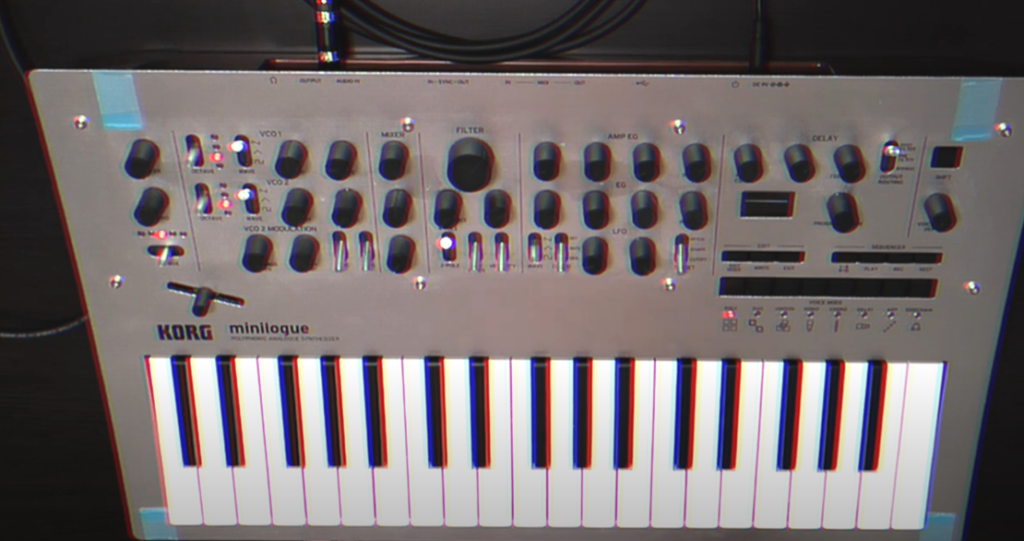
What Is a MIDI Keyboard?
A MIDI keyboard is an essential tool for any musician. It can be used to generate sounds and convert them into music, which you will then hear through speakers or headphones. MIDI keyboards can imitate natural sounds, such as the sound of a piano or guitar, or they can create new, unique sounds. Some of the most popular MIDI keyboards are the Akai MPK249, the M-Audio Oxygen 49, and the Native Instruments Komplete Kontrol S49. The history of music would be quite different without MIDI. It’s a protocol that allows electronic instruments to communicate with each other, and has been used for decades now.
You can find a wide range of MIDI keyboards, from 25-key controllers to full sized 88 keys. Some have piano style keyboards while others include drum pads and faders that allow you more control over your music production process.
MIDI keyboards with USB connectivity can serve as a controller for computer-based music production software, such as Ableton Live, Logic Pro, or Pro Tools.
MIDI keyboards can be connected to a computer using a USB cable, or they can be connected wirelessly using Bluetooth. MIDI keyboards can also be connected to iOS devices such as the iPhone and iPad. [2]
What’s the Difference Between a MIDI Keyboard and Synthesizer?
Synthesizers and keyboards are both types of musical instruments that generate audio signals. These sounds can then be converted into sound by your speakers or headphones, depending on what you want to listen to. The main difference between an electronic keyboard and synthesizer is that a MIDI-enabled one can only generate sounds stored within its internal memory, while the latter has access to extra features like oscillators.

Cost
MIDI keyboards and synthesizers produce different types of sounds. A MIDI keyboard is a controller that sends MIDI signals to a computer or other electronic device, while a synthesizer is an instrument that produces sound electronically. MIDI keyboards come in a range of sizes, from small portable units to large 88-key controllers. They have a piano-style keyboard, but depending on the model, additional pads and controls may also be included. MIDI keyboards can be used to control any software or hardware that supports MIDI, such as synthesizers, drum machines, and computer programs. Synthesizers are instruments that generate sound electronically. They come in many different types, from small portable units to large rack-mounted units. Synthesizers can be used to create any type of sound, from classic analog synth sounds to modern digital sounds. MIDI keyboards and synthesizers both have their own pros and cons. The MIDI keyboard is a great choice if you want to control multiple devices at once, or if you want to play virtual instruments on your computer. Synthesizer is a great choice if you want to create your own sounds, or if you want to have more control over the sound of your instrument.
Sound
If you’re serious about music, you need a MIDI keyboard and synthesizer. But what’s the difference between them? A MIDI keyboard is a controller that sends MIDI signals to a computer or other devices. MIDI stands for Musical Instrument Digital Interface. A MIDI keyboard can be used to control various sound parameters, such as volume, pitch, and reverb. It can also be used to trigger recorded sounds or sequences. Synthesizers, on the other hand, generate sound. They can be controlled by a MIDI keyboard or other controller, but they don’t have to be. There are two main types of synthesis: additive and subtractive. Additive synthesis is the process of creating sound by adding together sine waves of different frequencies. Subtractive synthesis is the process of creating sound by subtracting harmonics from a waveform. There are also hybrid synthesizers that use both additive and subtractive synthesis. You can find MIDI controllers in a range of sizes, from small 25-key models to large 88-key versions. Synthesizers also come in a variety of sizes, from small tabletop units to massive rack mountable beasts. When choosing a MIDI keyboard or synthesizer, it’s important to consider your needs and budget. If you’re just starting out, a smaller and more affordable MIDI keyboard might be all you need. But if you’re looking for more advanced features and greater flexibility, you’ll need to spend more money on a higher-end model. MIDI keyboards and synthesizers are two essential tools for any musician.
MIDI data
Whether you’re a seasoned pro or just getting started, our MIDI devices can take your performance to the next level. With endless connectivity options in every style and color imaginable – including over Ethernet networks for maximum flexibility-we have something perfect. MIDI devices are able to generate sounds, which can then be controlled with other instruments. Sound generators receive messages from a controller or another device in order for it to produce its unique tone – either would work alone. Controllers are a vital component of any music production environment. They generate the messages that tell sound modules how to produce specific sounds, which can be anything from samples or synthesis based on what you choose for your controller. MIDI data can be sent through a MIDI cable or over a computer network using standard protocols. MIDI devices are generally grouped into two categories, controllers and sound generators. Controllers generate MIDI messages and include devices such as keyboards, drum pads and wind controllers. Sound generators receive MIDI messages and create sounds, typically from either samples or synthesis.
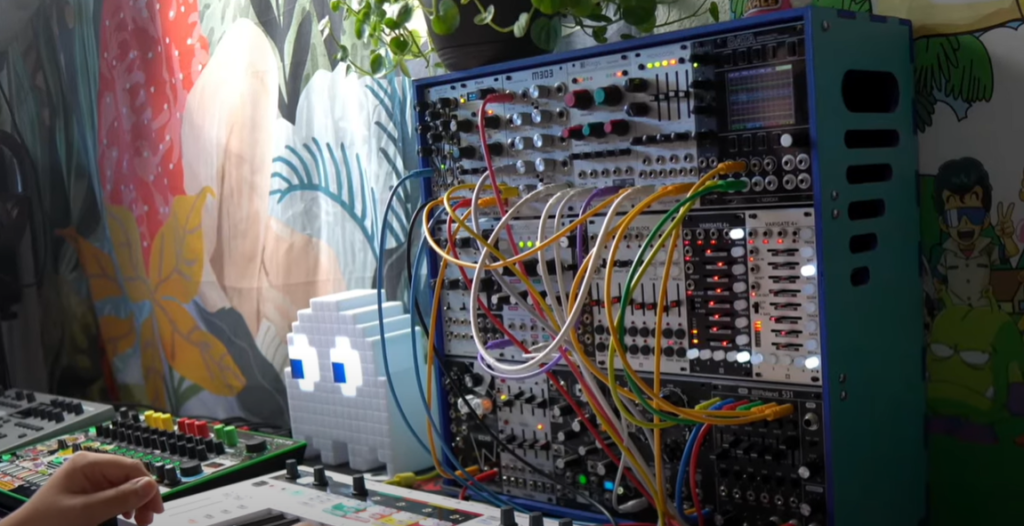
Controls
One of the most important aspects to consider when choosing between a MIDI keyboard and synthesizer is the control interface. MIDI keyboards typically have a much more simplistic control interface than synthesizers. This is because they are designed to be used as an input device for other instruments or software, rather than being played as standalone instruments. Synthesizers, on the other hand, often have a variety of different control options that can be used to create different sounds. One of the biggest advantages of MIDI keyboards is that they usually come with a pitch and modulation wheel. This allows you to add vibrato or other effects to your playing. Synthesizers typically don’t have these types of controls, so you’ll need to rely on the software or other instruments to add these effects. MIDI keyboards also come with a sustain pedal input. This allows you to connect a sustain pedal to the keyboard, which can be used to hold notes for long periods of time. Synthesizers usually don’t have this feature, although some newer models are starting to add it. [3]
Pros and Cons MIDI Keyboard and Synthesizer
MIDI keyboards and synthesizers are two very popular pieces of music equipment that allow you to create and control sounds. They both have their own unique set of pros and cons that you should consider before making a purchase.
MIDI Keyboard Pros:
- MIDI keyboards are generally less expensive than synthesizers.
- MIDI keyboards are smaller and more portable than synthesizers.
- MIDI keyboard keys tend to be velocity-sensitive, meaning they can respond to how hard you press them. This allows for more expressive playing.
- Many MIDI keyboard models come with built-in controllers such as pitch bend and mod wheels, which give you more control over the sounds you create.
- MIDI keyboards often include software that allows you to edit and create sounds.
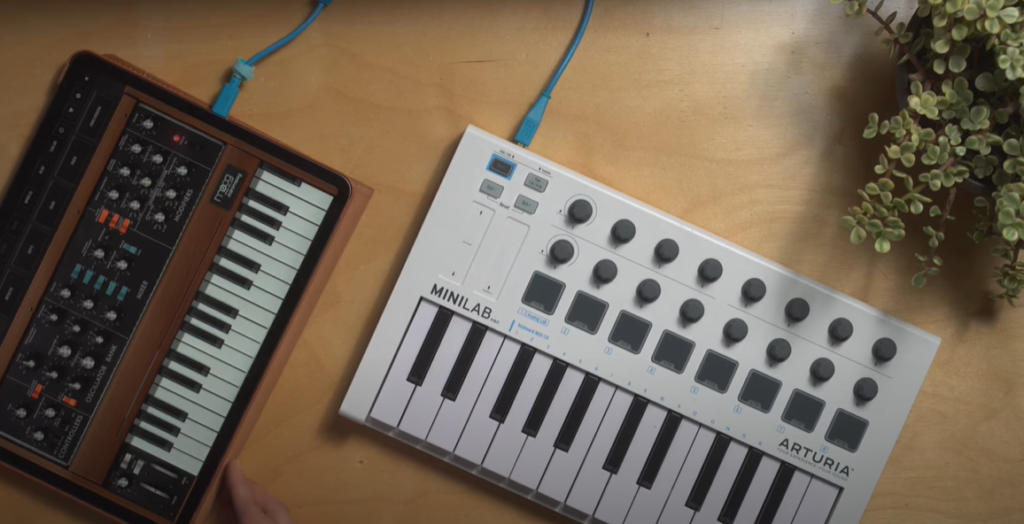
MIDI Keyboard Cons:
- MIDI keyboards typically have fewer keys than synthesizers. This can be limiting for some musicians.
- MIDI keyboards do not always produce as rich or high-quality of sound as synthesizers.
- MIDI keyboards may not include all the features and controls that some musicians need or want.
Synthesizer Pros:
- Synthesizers often produce richer and higher-quality sounds than MIDI keyboards.
- Synthesizers typically have more keys than MIDI keyboards, giving you a wider range to work with.
- Synthesizers often include a variety of built-in controllers and features that allow you greater control over the sounds you create.
- Many synthesizers come with software that allows you to edit and create sounds.
Synthesizer Cons:
- Synthesizers can be more expensive than MIDI keyboards.
- Synthesizers are often larger and less portable than MIDI keyboards.
- Synthesizers may have a steep learning curve for some musicians.
- Some synthesizers can produce very complex sounds that may not be what some musicians are looking for. [4]
However, both MIDI keyboards and synthesizers have a lot to offer musicians of all levels of experience. It really comes down to what you need and want from your music equipment. Consider your budget, the type of music you want to create, and the features that are most important to you before making a purchase.
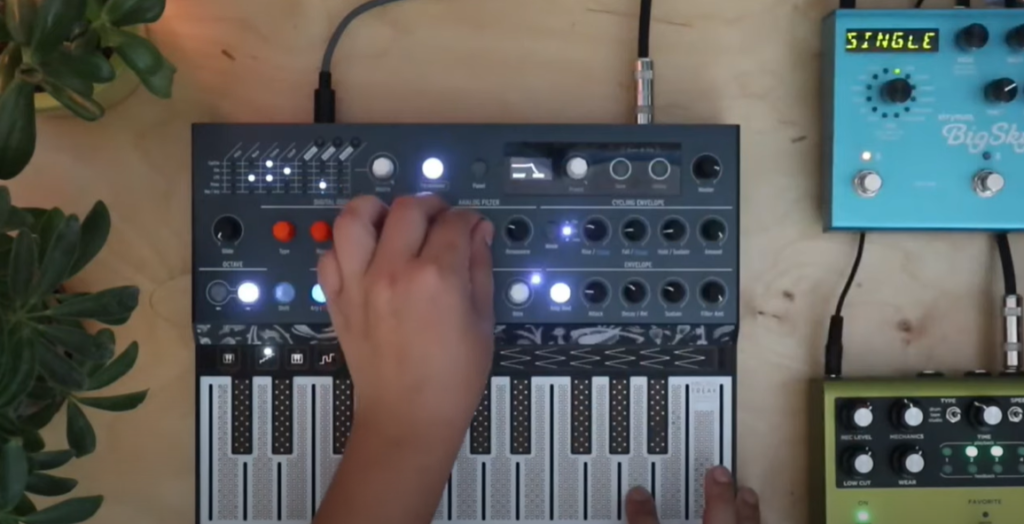
MIDI Keyboard vs. Synthesizer: What’s the Difference?
Explore the distinctions between MIDI keyboards and synthesizers, including their sound generation methods, common use cases, and notable features, in this informative table.
| Sound Generation | Use Cases | Notable Features |
|---|---|---|
| MIDI Keyboard | Music production, MIDI instrument control | Customizable mappings, extensive connectivity |
| Synthesizer | Sound synthesis, live performance | Sound creation, onboard sounds, modulation |
Explanation of the Table:
- Sound Generation: Defines how each instrument generates sound.
- Use Cases: Describes the typical applications and scenarios for each instrument.
- Notable Features: Highlights distinctive characteristics or functionalities of each instrument type.
Understanding the differences between MIDI keyboards and synthesizers can help you choose the right instrument for your musical endeavors:
MIDI Keyboard: These devices primarily serve as versatile tools for music production and MIDI instrument control. They excel in customizable mappings and offer extensive connectivity options, making them essential in modern music production setups.
Synthesizer: Synthesizers are designed for sound synthesis and live performance. They are known for sound creation capabilities, onboard sounds, and modulation options, allowing musicians to shape and sculpt unique sounds.
Whether you’re a producer seeking precise control over virtual instruments or a performer looking to craft and manipulate your own sounds, understanding these differences will guide you toward the instrument that best suits your musical goals.
FAQ
Is there a difference between a keyboard and a synthesizer?
Technically speaking, a keyboard is simply an input device that allows you to play notes on a synthesizer. A synthesizer is the actual sound-generating engine that produces the sounds you hear. So in short, yes – there is a difference between a keyboard and a synthesizer, though they are commonly used together. However, it is important to note that not all keyboards are created equal. Some keyboards, such as those made by Yamaha and Roland, are full-fledged synthesizers in their own right and do not require an external sound engine. Others, known as MIDI controllers, are nothing more than input devices and cannot create sound on their own. However, both types of keyboards can be used to control other devices, such as computers, drum machines, and sequencers.
Can you use a MIDI controller as a synthesizer?
You can use a MIDI controller as a synthesizer if it has the necessary features. A MIDI controller is an electronic device that generates and sends MIDI messages to other devices. A MIDI keyboard is a type of controller that is designed to look and feel like a traditional piano keyboard. It usually has a row of black and white keys, each of which can be pressed to send a MIDI note message. A MIDI synthesizer is a device that takes MIDI messages and uses them to generate sounds. MIDI controllers and MIDI keyboards are often used together. The controller sends MIDI messages to the synthesizer, which then produces the corresponding sounds. MIDI controllers come in all shapes and sizes. Some are very simple and only have a few buttons and knobs. Others are much more complex and can have hundreds of different controls. MIDI keyboards typically have a much smaller number of controls than MIDI controllers. This is because they are designed to be played like a piano. They usually only have a few octaves of keys, and sometimes a few other controls like pitch and mod wheels. MIDI controllers can be used to control any type of MIDI device, including synthesizers. However, they are often used with software instruments, which are virtual instruments that run on a computer.MIDI keyboards are usually used to play hardware synthesizers.
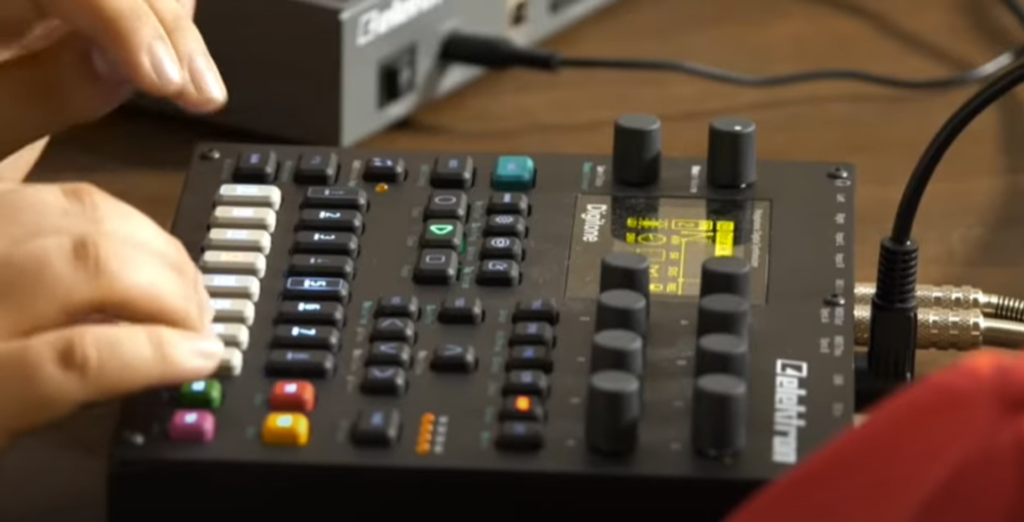
What is the difference between a MIDI keyboard and a keyboard?
MIDI keyboards are controllers that send MIDI signals to other devices, while synthesizers use those MIDI signals to create sound. In other words, a MIDI keyboard is like a regular keyboard, but without the speakers and sound production capabilities. You’ll need to connect your MIDI keyboard to a computer or another sound-producing device in order to hear anything. MIDI keyboards come in all shapes and sizes, from small and portable models to large 88-key models. Some MIDI keyboards also have built-in drum pads and other features that can be used for performing or producing music. Also, some MIDI keyboard models come with a software bundle, which can be helpful if you’re just starting out.
What is a good beginner synthesizer?
There are a few things to consider when purchasing your first synth. One is the type of sounds you want to create. Another is the price range you’re comfortable with. And finally, you’ll need to decide whether you want an analog or digital synth. If you’re looking for classic, warm tones, then an analog synth is the way to go. But if you want more modern, digital sounds, then a digital synth is probably a better choice. Price is also a big consideration. Analog synths can be quite expensive, so if you’re on a budget, a digital synth might be a better option. Here are a few of our favorite beginner synths:
Korg MS-20 Mini
This analog synth is capable of creating a wide range of sounds, from classic to modern. It’s also very affordable, making it a great option for beginner synth players.
Novation Bass Station II
This analog synth is perfect for creating bass lines and other low-end sounds. It’s also very affordable, making it a great option for beginner synth players.
Arturia MicroBrute
This analog synth is perfect for creating a wide range of sounds, from classic to modern. It’s also very affordable, making it a great option for beginner synth players.
Why do people use MIDI keyboards?
MIDI keyboards are popular among musicians for a number of reasons. For one, they’re relatively affordable and portable compared to other types of musical equipment. They also offer a wide range of features and functions that can be helpful for both beginners and experienced musicians alike. Some of the most common reasons people use MIDI keyboards include:
- Practicing at home or on the go: A MIDI keyboard is a great way to practice your musical skills without having to lug around a heavy piano or other large instrument. They’re also relatively quiet, so you won’t disturb your neighbors or family members while you practice.
- Composing and recording music: MIDI keyboards can be used to compose and record music. Many of them come with a built-in sequencer that allows you to record your performance and play it back later. You can also use a MIDI keyboard to control other musical equipment, such as synthesizers and drum machines.
- Performing live: MIDI keyboards are often used by DJs and other performers when they’re playing live. This is because they offer a great deal of flexibility and can be used to control a wide variety of musical equipment.
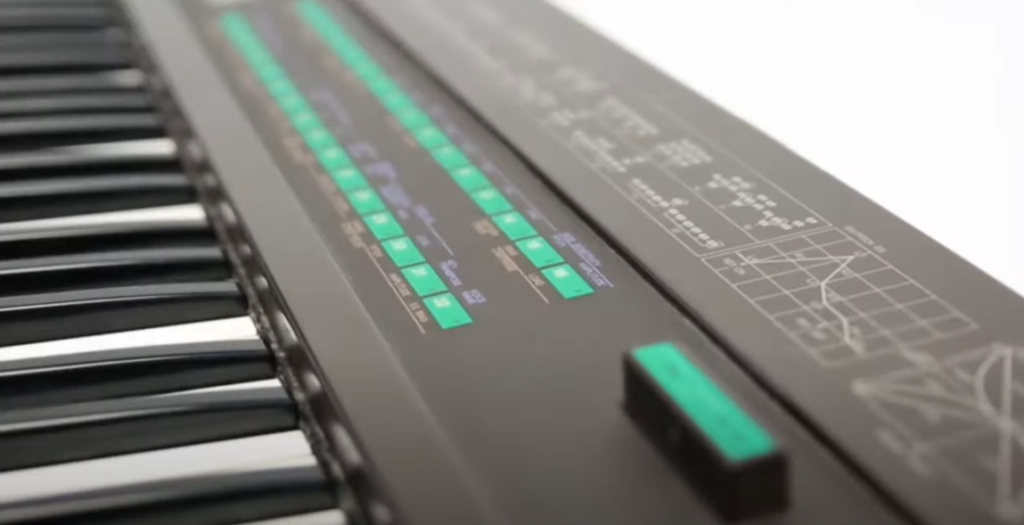
Can you use a MIDI keyboard without a computer?
Yes, you can use a MIDI keyboard without a computer. There are several ways to do this. One way is to use a stand-alone MIDI controller that has its own built-in sound engine. These devices are great for live performances, as they allow you to play and control your sound without having to lug around a laptop or other computer. Another way to use a MIDI keyboard without a computer is to connect it to an external sound module. This can either be a hardware device or a virtual instrument running on your computer. External sound modules give you the flexibility to create your own custom sounds, and they can be much more powerful than the built-in sound engines found in most MIDI controllers. However, they do require a bit more setup and configuration.
Should I buy a keyboard or MIDI?
If you’re looking to produce music electronically, then you’ll need to decide whether you want to purchase a MIDI keyboard or a digital synthesizer. Both devices can be used to create and record music, but they serve different purposes. In this article, we’ll break down the differences between MIDI keyboards and digital synthesizers so that you can make the best decision for your needs. MIDI keyboards are designed to be used with a computer or other external sound module, and they send MIDI signals that can be used to trigger sounds or record performances. MIDI stands for Musical Instrument Digital Interface, and it’s a protocol that allows electronic musical instruments to communicate with each other. MIDI keyboards usually have a pitch bend wheel and octave buttons, which allow you to change the pitch of the notes that you’re playing. They may also have other controller elements like modulation wheels and aftertouch. Digital synthesizers, on the other hand, are self-contained units that generate sound internally. Most digital synthesizers have built-in speakers and can be played without a computer. They typically have a keyboard, but they may also have other controller elements like pitch and mod wheels. Digital synthesizers usually have more sound-editing features than MIDI keyboards, and they can be used to create more complex sounds. However, MIDI keyboards are more portable and typically cost less than digital synthesizers.
So, which should you buy? If you’re just starting out and want an all-in-one device that you can use to create simple melodies and beats, then a MIDI keyboard would be a good choice. If you’re more interested in sound design and want more control over the timbre of your sounds, then a digital synthesizer would be a better option.
Can you hear a MIDI keyboard?
A MIDI keyboard is an instrument that sends MIDI information to a computer or other sound device. The keyboard itself doesn’t make any sound; it’s the job of the sound device to turn the MIDI information into music. MIDI is an acronym for Musical Instrument Digital Interface. MIDI allows electronic musical instruments and computers to communicate with one another by sending control information. MIDI information can include things like which note is being played, how hard the note is being played, and how long the note is held. Some MIDI keyboards also have built-in sounds, so they can be used without a computer. These are called synthesizers. Synthesizers can create any kind of sound, from a piano to a violin to a drum kit.
Can you use a MIDI keyboard as a piano?
You can use a MIDI keyboard as a piano, but there are some important differences to keep in mind. A MIDI keyboard is not an acoustic instrument, and therefore does not produce sound on its own. Instead, it sends signals to a computer or other device that produces sound. This means that you’ll need some sort of software or hardware to create sound with a MIDI keyboard. There are also some differences in the way that MIDI keyboards and pianos are played. For example, MIDI keyboards usually have keys that are velocity-sensitive, meaning that they will play louder or softer depending on how hard you hit them. This can be a great feature if you’re looking to add more expression to your playing, but it’s something to keep in mind if you’re used to playing a traditional piano. MIDI keyboards come in all different shapes and sizes, from compact models that are perfect for traveling musicians to full-size 88-key models that mimic the feel of a grand piano. There are also MIDI controllers that don’t have any keys at all, but instead focus on knobs, faders, and other controls that can be used to control sound.
How does a MIDI keyboard differ from a synthesizer?
A MIDI keyboard and a synthesizer are distinct musical instruments. A MIDI keyboard is a controller that generates MIDI data to control external devices like synthesizers or software instruments. In contrast, a synthesizer is a standalone musical instrument capable of generating and shaping sound independently.
What is the primary function of a MIDI keyboard in music production?
The primary function of a MIDI keyboard is to transmit MIDI data to other MIDI-compatible devices or software. It provides a means of playing and controlling external synthesizers, virtual instruments, and digital audio workstations (DAWs) without producing sound on its own.
How does a synthesizer differ from a MIDI keyboard in terms of sound generation?
A synthesizer is designed to create and produce sound, often offering a wide range of onboard sounds and the ability to modify and shape those sounds using various parameters. In contrast, a MIDI keyboard does not generate sound by itself but controls external devices or software to produce sound.
Can you use a MIDI keyboard and a synthesizer together in music production?
Yes, combining a MIDI keyboard with a synthesizer is a common practice in music production. The MIDI keyboard provides a convenient interface for playing and controlling the synthesizer, allowing you to create and shape sounds more dynamically and intuitively.
Are there specific advantages to using a synthesizer over a MIDI keyboard, or vice versa?
Synthesizers offer self-contained sound generation capabilities and are ideal for musicians who want immediate access to a variety of sounds. MIDI keyboards, on the other hand, provide greater versatility by allowing control over multiple external devices and software instruments, making them well-suited for electronic music production and live performances.
How do the playing experience and features of a MIDI keyboard compare to those of a synthesizer?
A MIDI keyboard typically has a piano-style keyboard and may include additional controls like knobs, faders, and pads for modulation. Synthesizers can have similar keyboards but also include sound-generating components, onboard effects, and a broader range of sound-shaping options.
What types of music genres or applications favor the use of a synthesizer over a MIDI keyboard?
Synthesizers are popular in genres like electronic, ambient, experimental, and pop music, where sound design and manipulation are central to the creative process. They are also used in film scoring and soundtracks for their ability to create unique and atmospheric sounds.
Can a MIDI keyboard be used as a synthesizer with the right software or hardware setup?
Yes, a MIDI keyboard can be used as a synthesizer when connected to a computer or external synthesizer module. By using software synthesizers or external hardware synthesizers, you can generate and manipulate sound using the MIDI keyboard as a controller.
Useful Video: What Is the Difference Between a Keyboard and Synthesizer?
Conclusion
MIDI keyboards and synthesizers are two essential pieces of equipment for any musician. They both have their own unique capabilities and features that make them ideal for different situations. It’s important to understand the difference between the two before making a purchase, so you can be sure to get the right tool for your needs.
MIDI keyboards are great for controlling software instruments and playing live music. They are typically more portable than synthesizers and can be used with a laptop for on-the-go performances. Synthesizers are better suited for studio production and creating new sounds. They often have more features than MIDI keyboards, such as built-in effects and sequencing capabilities. We hope this guide has helped you better understand the difference between MIDI keyboards and synthesizers. Thanks for reading!
References:
- https://www.makeuseof.com/midi-keyboard-vs-midi-controller-vs-synthesizer/
- https://homestudiomagic.com/the-difference-between-a-midi-keyboard-and-a-synthesizer/
- https://keyboardkraze.com/hardware-synthesizer-vs-midi-controller-for-bands/
- https://integraudio.com/midi-keyboard-vs-synth/


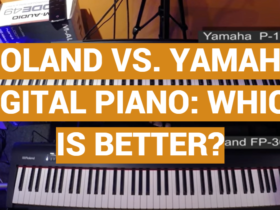

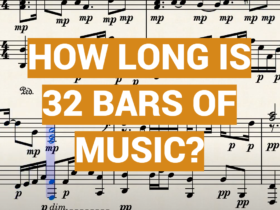
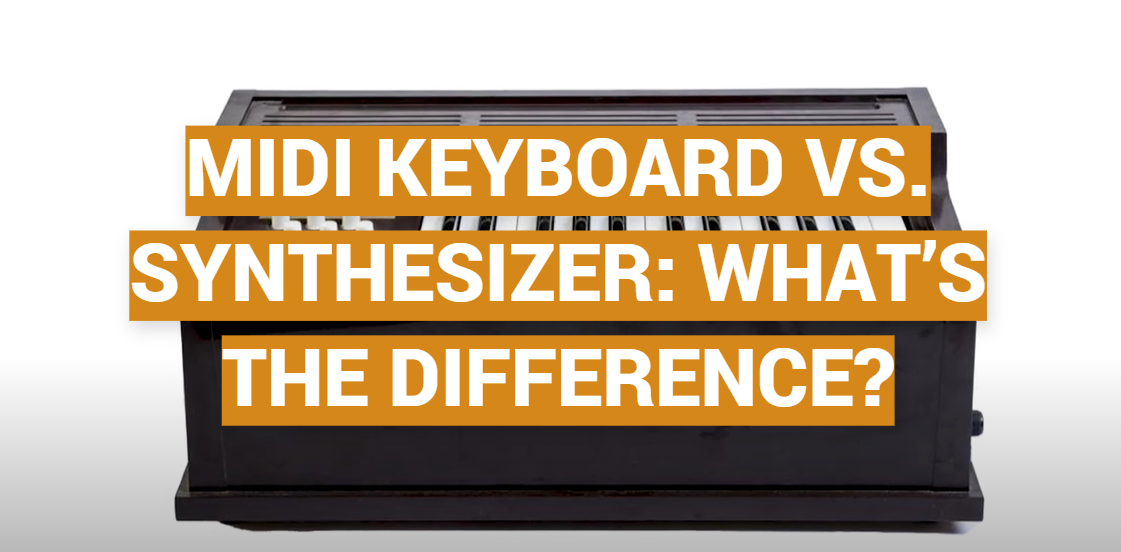


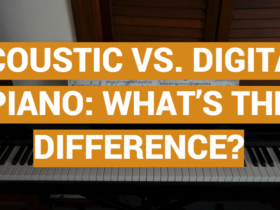
Leave a Reply